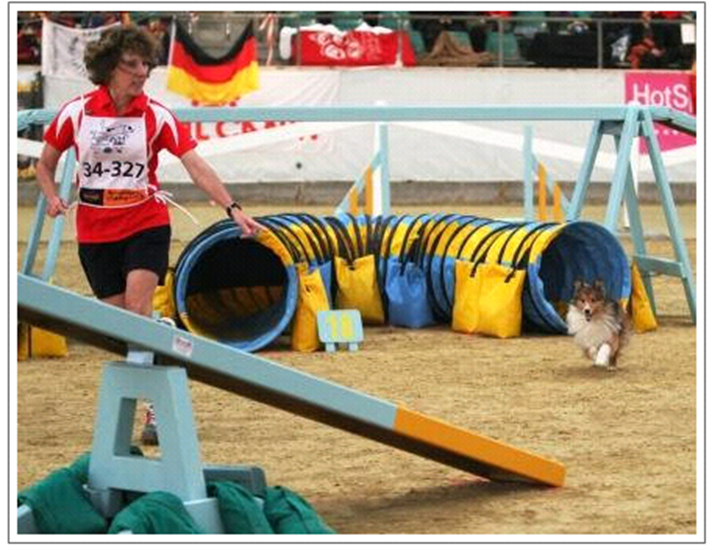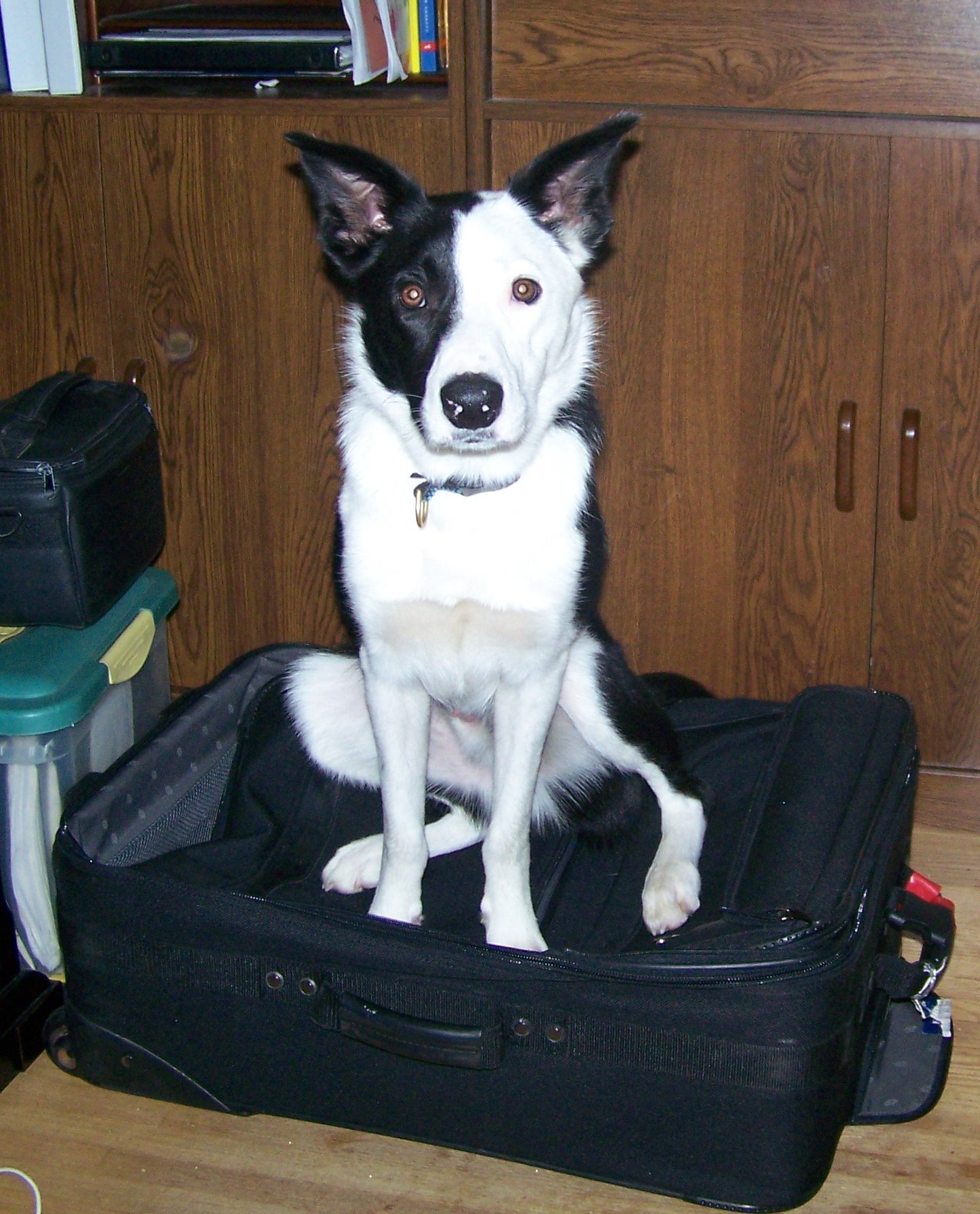I was recently asked by a friend who will be getting a puppy soon…how did I know when it was the right time to introduce new skills to Tai? The question got me thinking. Each puppy is different and each trainer has different goals so other than a few general guidelines, there is no one answer to the question. During the early, early days…I wanted all of Tai’s experiences with people and other dogs and puppies to be positive. That meant introducing him to lots of friendly people which wasn’t hard but also sticking pretty much to same age puppies and avoiding adult dogs other than our own. When he got a little older – 3 months or so, he started to meet and greet older trusted dogs and by 6 months old, he was pretty dog saavy and even the occasional cranky dog he might meet, didn’t do any harm because he had built up a solid bank of positive experiences. It also meant gradually introducing him to potentially scary or over-stimulating things like speeding cars. Now, we can be at a dog show, hotel or festival with tons of people and dogs and even a hot air balloon abou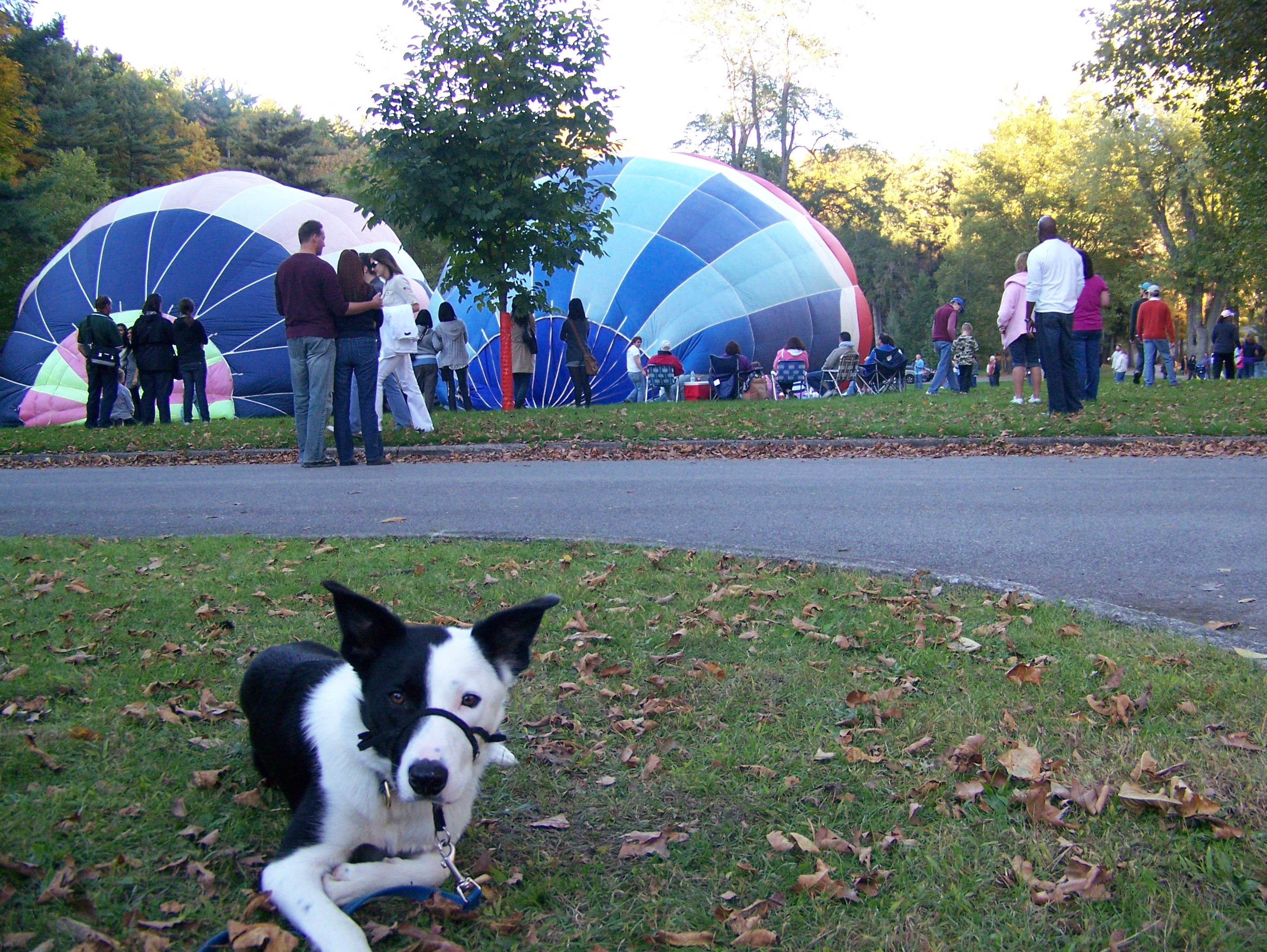 t to launch and he handles it all (mostly) with great aplomb. But not so much with bicycles speeding close by us as I recently found out so that is on our list to work!
t to launch and he handles it all (mostly) with great aplomb. But not so much with bicycles speeding close by us as I recently found out so that is on our list to work!
When it comes to agility training, the same question applies. When is is the right time to introduce my puppy to contact training, weave pole training, jump training, sequencing, etc? One obvious answer is…not until the dog is mature enough to handle the stresses – both mental and physical. So, for full height jumping or weave training…best to wait until at least 1 yr old. But no need to wait that long to get started… there are lots of training techniques today that allow us to safely give our puppies the foundation needed for all of those skills and the best ones are centered around games we play with our puppies!
But lets back up. What about focus, toy drive, food drive, working through distractions and just plain having the coordination to get the job done? For example, Tai has had a great nose touch to my hand for a long, long time but needed some time to develop the skill and coordination to get all four of his big feet on a travel plank – not an issue I encountered with my shelties! Now – at 9 months old and with some practice – he can stand and balance on the board so it’s the right time to introduce targeting on the plank.
Part of the answer too, is the vision for the end behavior and knowing the steps to get there. I figured out a long time ago from observing top notch dog trainers that they know what they want and in any training session, they observe and adapt to the dog they are working with to get each piece of the end behavior perfect … and they have a lot of tools in their toolbox to draw on. That’s why they are successful with dog after dog.
Here is an example. With my previous dogs I wasn’t able to use toys as effectively as I liked because while they would tug, I had never put the piece in place of driving to the toy, picking it up and returning immediately to me to tug. So with Tai, I wanted this to be in place before starting some of his other skill training. In fact, I consider this a skill as important as a sit stay. And it’s (mostly) fun to train for both me and Tai. Sometimes it can be a lot of work getting that tug with distractions around. But I figure all that physical work is lending itself to maintaining my youthful figure. LOL.
Yesterday, I did Susan Salo-style straight line jump grids with Tai for the first time in about 7 w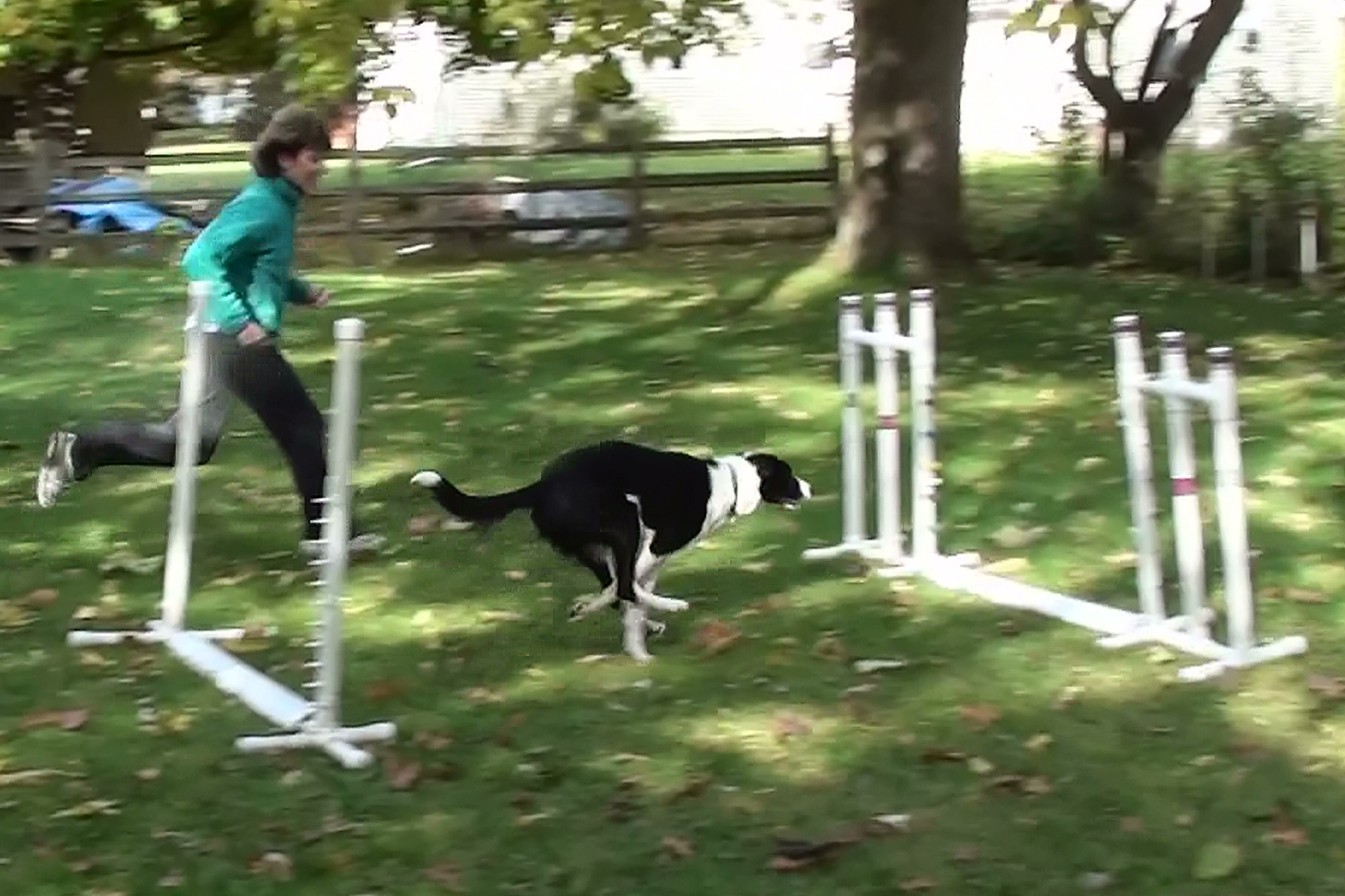 eeks. What first struck me was his increased speed and power compared to a couple of months ago. But there are so many other things I like about his performance. His solid sit stay, his focus forward, his skill in executing the grid even with me running along side, his send to the toy and his tugging when I caught up. All those pieces were trained separately and took some time to put in place and it’s neat to see it all come together. A short video clip is here:
eeks. What first struck me was his increased speed and power compared to a couple of months ago. But there are so many other things I like about his performance. His solid sit stay, his focus forward, his skill in executing the grid even with me running along side, his send to the toy and his tugging when I caught up. All those pieces were trained separately and took some time to put in place and it’s neat to see it all come together. A short video clip is here:
So, I guess the answer to the question of when is the right time depends on the dog, on the trainer and that vision thing. After observing literally hundreds of amazingly talented dogs and handlers at the FCI World Agility Championship and the USDAA Nationals over the last month, I am motivated and inspired to achieve the best for Tai and to not be in a hurry to get there. It will happen at the right time.
 I’ve been on a trick kick over the last couple of weeks. Maybe it’s because Halloween is just around the corner. But more likely, it’s because I’m back from the Worlds and USDAA Nationals with Breeze and I’m now concentrating more of my mental energy on Tai. AND because its fun AND because I looked at some of Silvia Trkman’s videos. Now there is a dog trainer! See link below.
I’ve been on a trick kick over the last couple of weeks. Maybe it’s because Halloween is just around the corner. But more likely, it’s because I’m back from the Worlds and USDAA Nationals with Breeze and I’m now concentrating more of my mental energy on Tai. AND because its fun AND because I looked at some of Silvia Trkman’s videos. Now there is a dog trainer! See link below.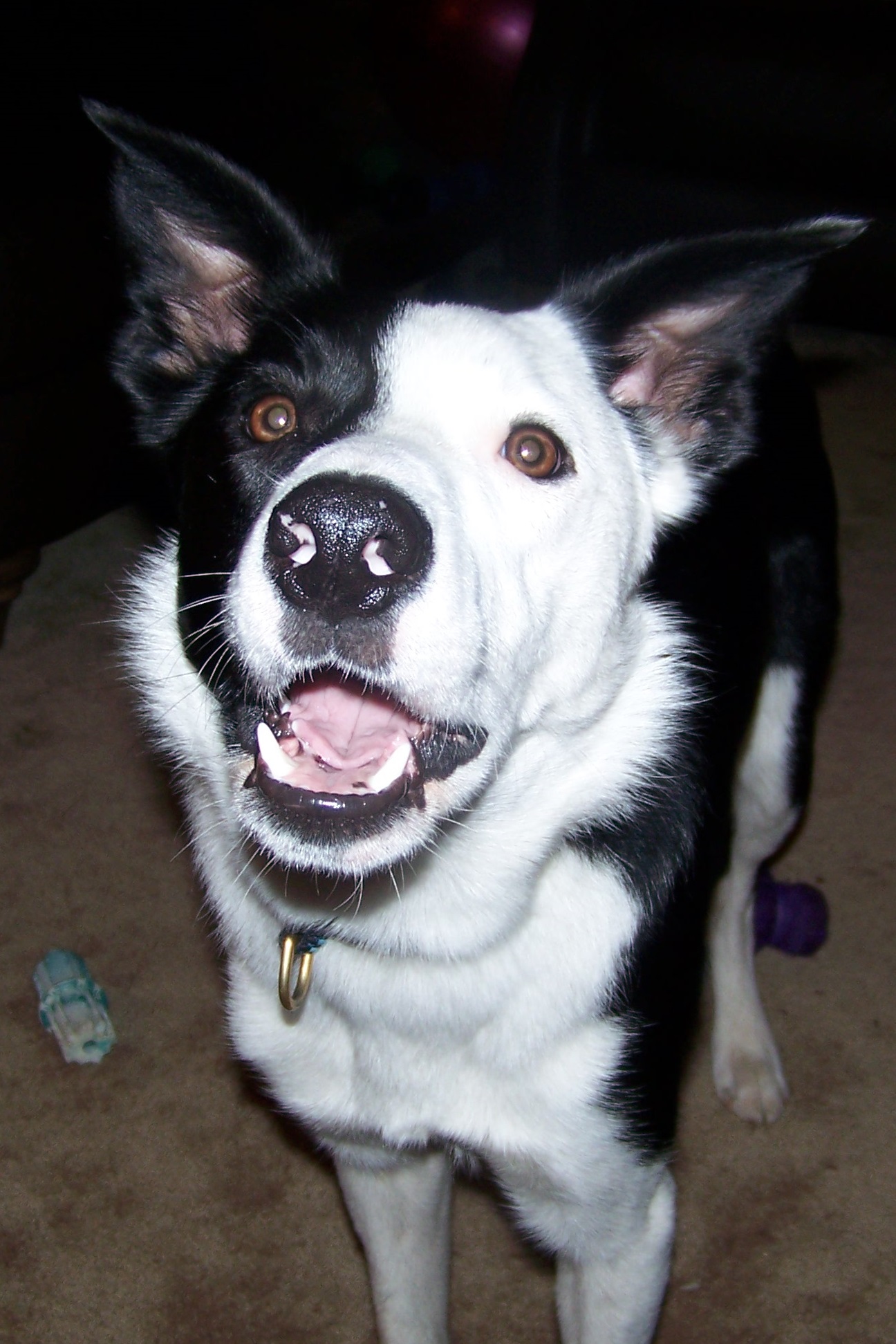 We’re working on extinguishing this behavior (or at least I am).
We’re working on extinguishing this behavior (or at least I am). While Tai rests calmly in his crate, he doesn’t usually choose to take a break unless it’s after a vigorous romp outdoors. But since he sometimes tries to squeeze himself into the sheltie’s bed and since he’s nearly 10 months old, it seemed like the right time for that investment. Here’s how that is working after an hour long hike yesterday.
While Tai rests calmly in his crate, he doesn’t usually choose to take a break unless it’s after a vigorous romp outdoors. But since he sometimes tries to squeeze himself into the sheltie’s bed and since he’s nearly 10 months old, it seemed like the right time for that investment. Here’s how that is working after an hour long hike yesterday.

